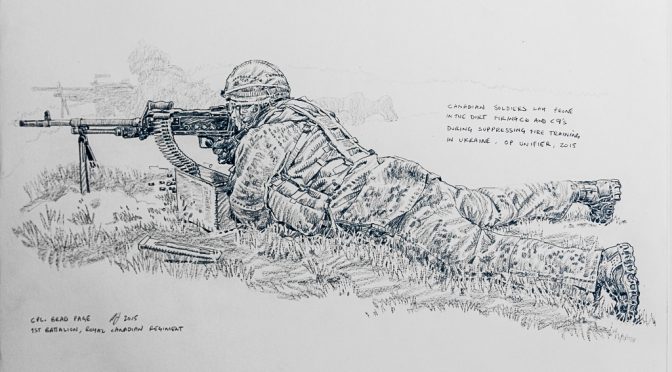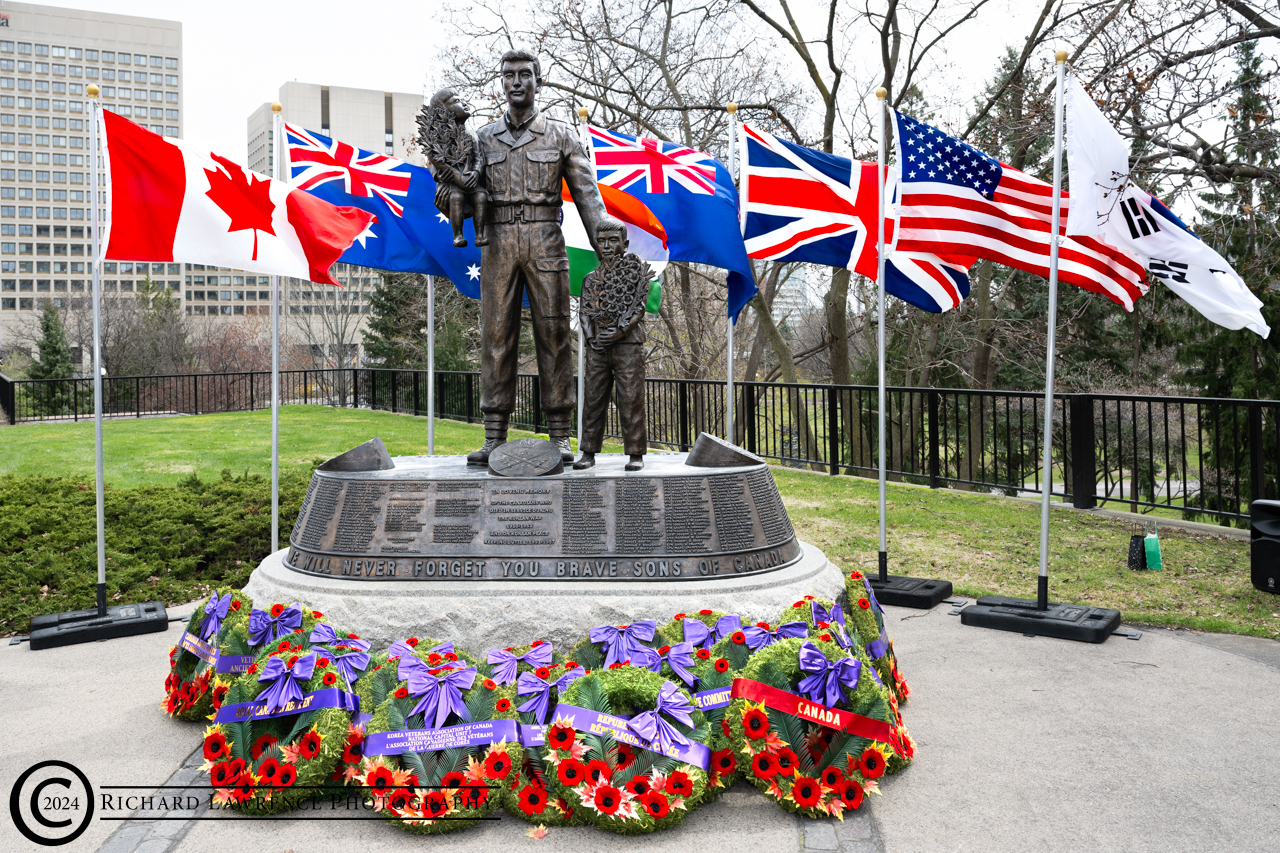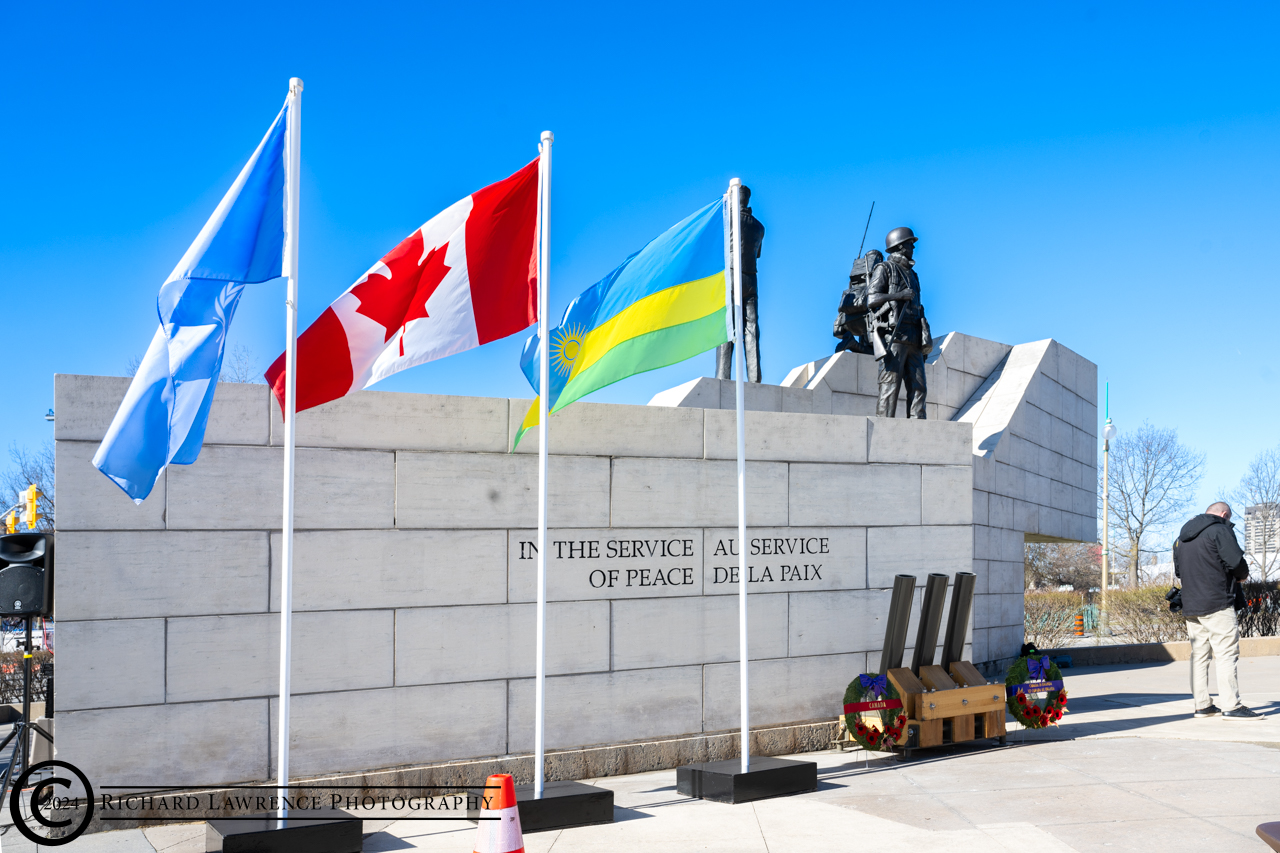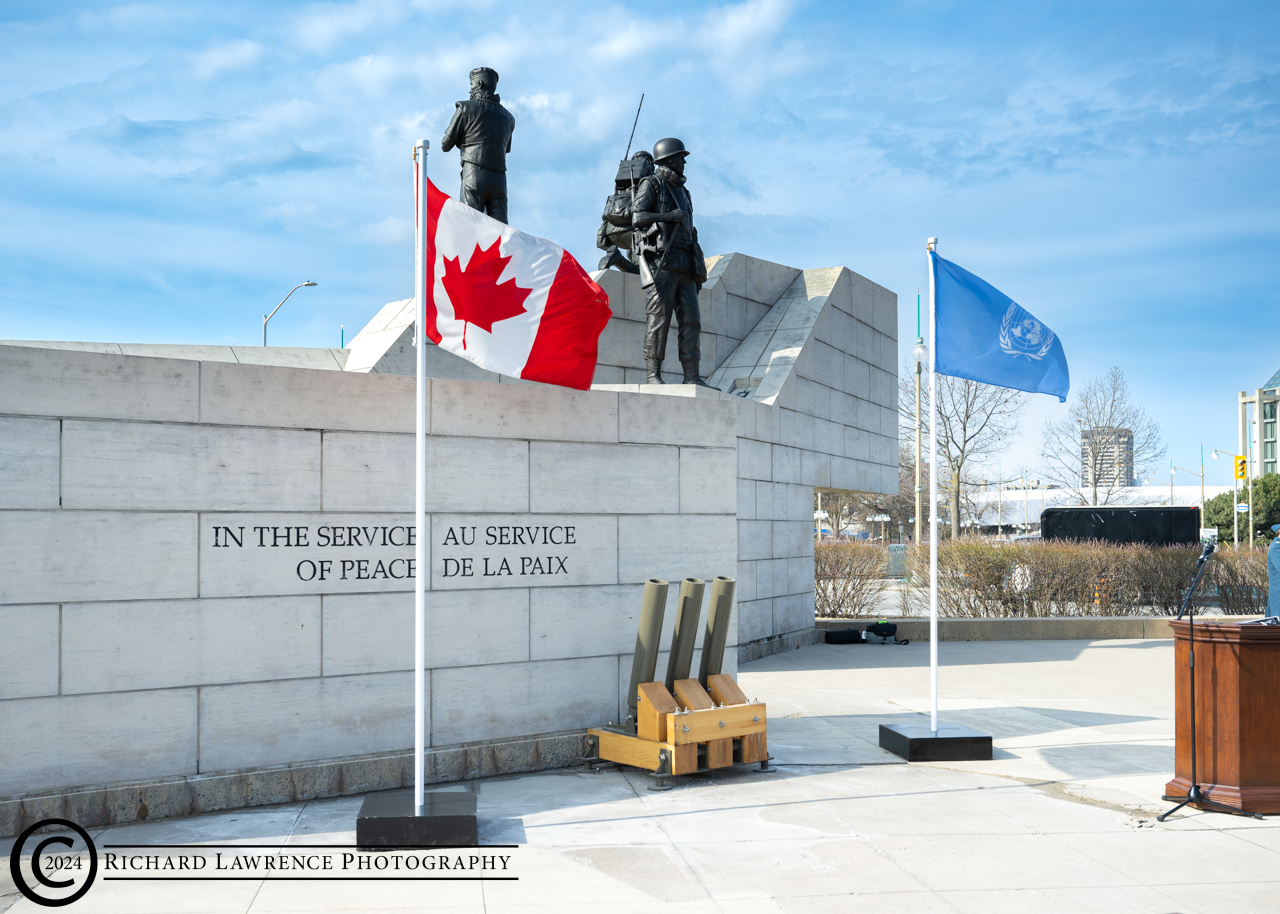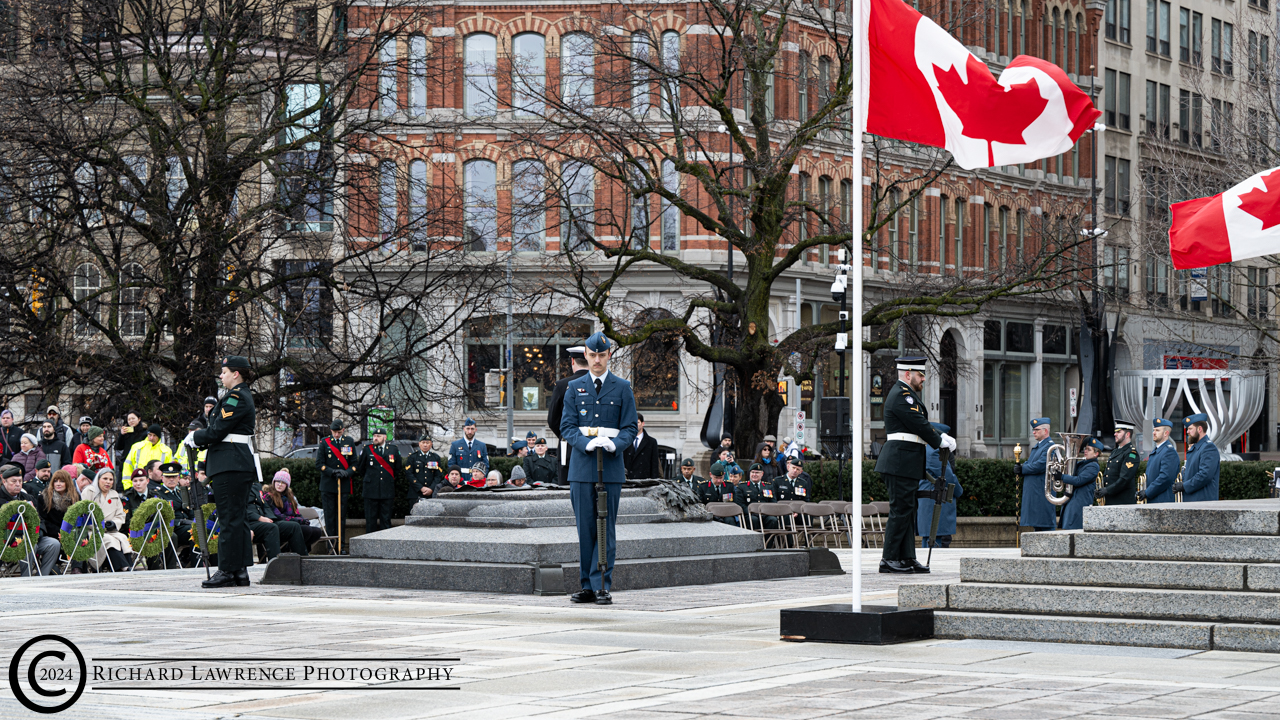From 2nd February, 2018, until 2nd April, 2018, the Canadian War Museum (CWM) will be hosting an exhibition of war art created by the Canadian Forces Artists Program (CFAP) – Group 7. The Directorate of History and Heritage of DND, which sits under the Commander Military Personnel Command and is commanded by LGen. Lemarre, is responsible for the CFAP Program. This program selects 5-10 artists from applicants (in this case approximately 50) to spend 7-10 days in the field with CAF troops to document the daily activities of the military. The selection committee is represented by the National Gallery of Canada, the Canadian War Museum, an artists’ representative, the Canada Council, and the Legion Magazine. The purpose of CFAP is to “… encourage artists to learn more about our men and women in uniform and to create works of art that document and explore Canada’s military history and experience.” (Steve Quick, DG Canadian War Museum). DND is responsible for the logistics and authority to place the artists in the field whereas the CWM has the responsibility for conservation and display.
Canada has a long history of military art which started in WWI with the first program followed by a second in WWII. From 1968-1985 a third program was instituted as the Canadian Armed Forces Civilian Artists Program and the current incarnation (fourth program) was started in 2001. This exhibition is the work of the seventh group to be selected of the fourth program that deployed with troops during 2014-2015 and started creating their works of art in 2015. Although they were “… in the field 7-10 days, [it] inspires them for years after.”, stated Dr. John MacFarlane of the Directorate of History and Heritage.
The exhibit is a mixture of media ranging from sketches, paintings and installations with lightbox and video exhibits and two using cast glass, from artists Nancy Cole, Richard Johnson, Guy Lavigueur, Ivan Murphy, Kathryn Mussallem, Erin Riley, Mark Thompson, and Eric Walker.
As with any artwork, what grabs ones attention is completely subjective. For me, it was the sketches of Richard Johnson, a Scottish born visual artist who had previously been embedded with American and Canadian Forces in Afghanistan for the National Post and the Washington Post before travelling to Ukraine with CFAP in 2015. It was his pencil drawings of Operation UNIFIER where CAF soldiers carried out their mission of support by helping to train Ukrainian armed forces that drew me to his display area, and then the stories behind the drawings that he told me during our brief talk together that kept me there. One story told of two soldiers, soaked to the bone in the rain, being dressed down by a superior for their poor performance in an exercise and, when the drawing was first shown, that the superior recognized himself in the picture.
The story behind “The Wrecker” is of a difference of experience where the Ukrainian soldiers were confident that one of their BMPs (tracked soviet-style vehicle) had the capability to pull out another BMP should it get stuck and the Canadians thought not. To prove their point, the Ukrainians drove their BMP into the mud until it became stuck and then drove a second BMP in to pull it out. This resulted in two BMPs stuck in the mud. The Wrecker is in reference to the Canadian Heavy Logistics Vehicle, Wheeled (HLVW), configured with a towing cable, and the drawing shows two Canadian and two Ukrainian soldiers hauling on the tow cable to connect to the BMP to start the extrication process.
Mr. Johnson also alluded to some of the difficulties in his work outside of the conditions, weather, and location, the primary ones being gaining the trust of the troops and then becoming invisible to them as they lived their lives. The artist has to have the trust of the troops so he can become one of them, allowing them to relax in his presence, and then he has to become invisible so that he can do his job without the “observer effect” (the act of observation changes the behaviour of the subject being observed). Given the short period of 7-10 days in the field, this is particularly difficult.
Although I spent most of my time with Mr. Johnson, other works deserve a moment or two as well. The “Hard Rain” is a series of three rows of five bombs of cast glass that have a video loop going through them that changes the colours from white through aqua to blue. Another cast glass work is the “Book of War” which has a stationary picture of a CF-18 while the background zooms by and the colours change, all buried deep within a cast glass book. There are lightbox displays of images from Kuwait as well as a video display of the Canadian Patrol Frigates, paintings of training in CFB St. Jean, and some larger art installations.
All in all, I enjoyed the exhibit and would suggest that it would make a good way to spend some of your time at the Canadian War Museum. Below are some pictures of the media event, the displays, and two videos.
==================================================
